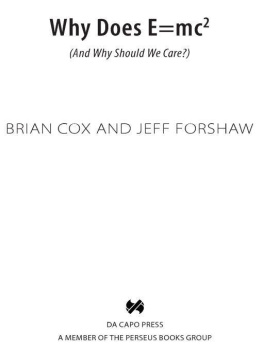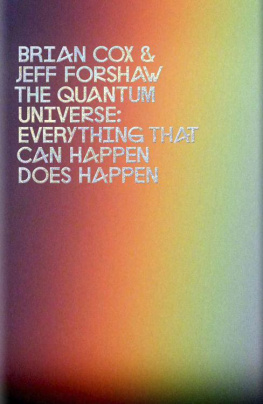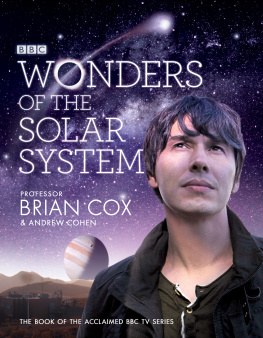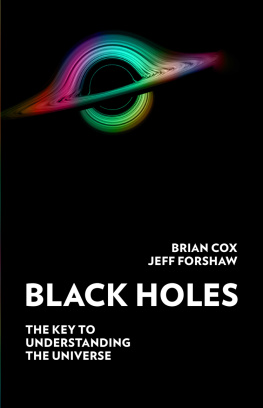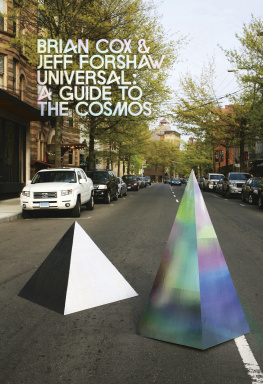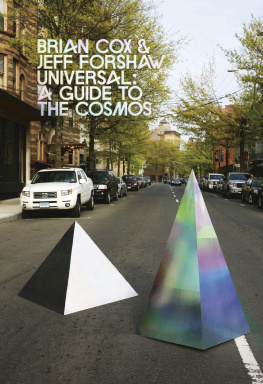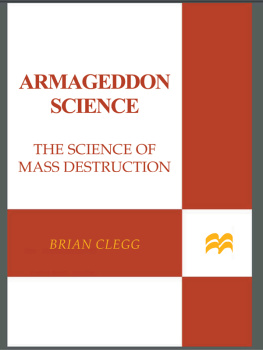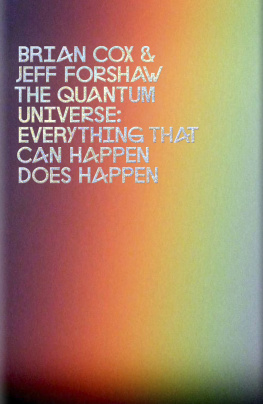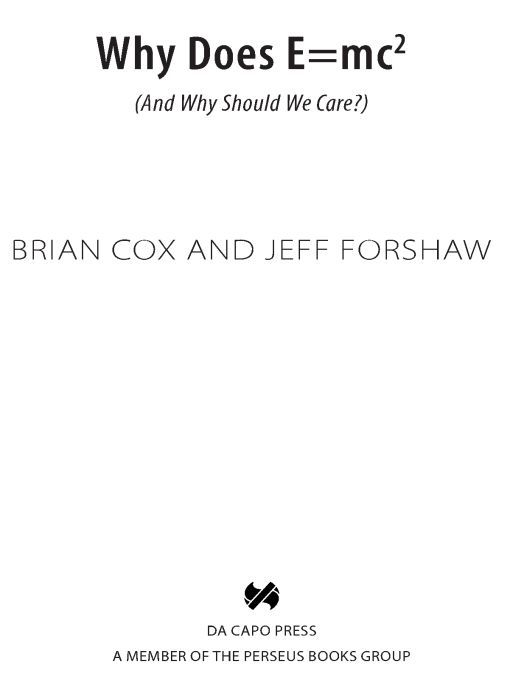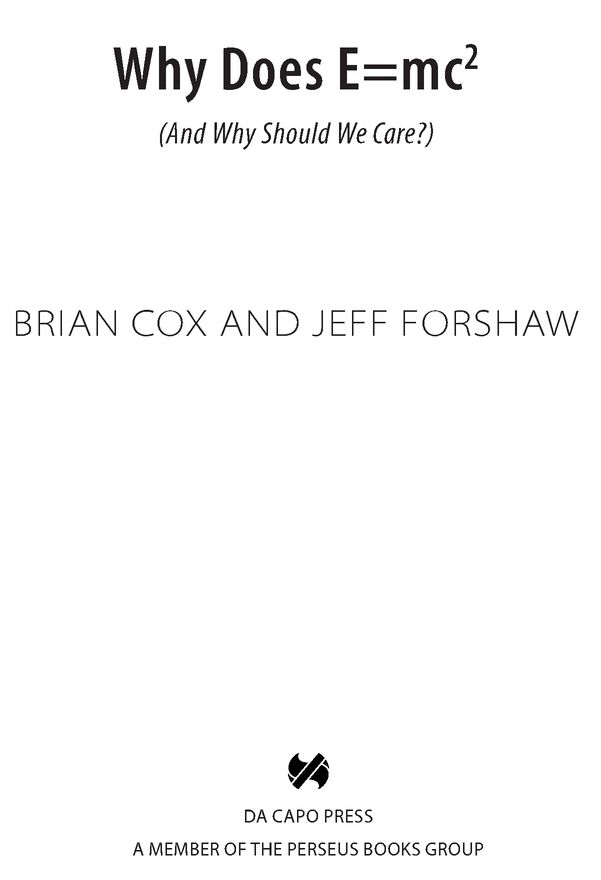Table of Contents
To our families, especially Gia, Mo, George, David, Barbara, Sandra, Naomi, Isabel, Sylvia, Thomas, and Michael
ACKNOWLEDGMENTS
We thank our management and agents, Susan, Diane, and George, and our editors, Ben and Cisca. Of our scientific colleagues, we should particularly like to thank Richard Batty, Fred Loebinger, Robin Marshall, Simone Marzani, Ian Morison, and Gavin Smith. Special thanks to Naomi Baker, especially for her comments on the early chapters, and to Gia Milinovich for asking the question.
PREFACE
Our aim in this book is to describe Einsteins theory of space and time in the simplest way we can while at the same time revealing its profound beauty. Ultimately, this will allow us to arrive at his famous equation E = mc2 using mathematics no more complicated than Pythagoras theorem. And dont worry if you cant remember Pythagoras, because we will describe that as well. Equally important, we want every reader who finishes this little book to see how modern physicists think about nature and build theories that become profoundly useful and ultimately change our lives. By building a model of space and time, Einstein paved the way for an understanding of how stars shine, uncovered the deep reason why electric motors and generators work, and ultimately laid the foundation on which all of modern physics rests. This book is also intended to be provocative and challenging. The physics itself is not at issue: Einsteins theories are very well established and backed up by a great deal of experimental evidence, as we shall discover as the book unfolds. In due course, it is very important to emphasize, Einstein may be forced to give way to an even more accurate picture of nature. In science, there are no universal truths, just views of the world that have yet to be shown to be false. All we can say for certain is that, for now, Einsteins theory works. Instead, the provocation lies in the way the science challenges us to think about the world around us. Scientist or not, each of us has intuition and we all infer things about the world from our everyday experiences. If we subject our observations to the cold and precise light of the scientific method, however, we often discover that nature confounds our intuition. As this book unfolds, we will discover that when things whiz about at high speeds, common-sense notions regarding space and time are dashed and replaced by something entirely new, unexpected, and elegant. The lesson is a salutary and humbling one, and it leaves many scientists with a sense of awe: The universe is much richer than our everyday experiences would have us believe. Perhaps most wonderful of all is the fact that the new physics, for all its richness, is filled with a breathtaking mathematical elegance.
Difficult as it may sometimes seem, science at its heart is not a complicated discipline. One might venture to say that it is an attempt at removing our innate prejudices in order to observe the world as objectively as possible. It may be more or less successful in that goal but few can doubt its success in teaching us how the universe works. The really difficult thing is to learn not to trust what we might like to think of as common sense. By teaching us to accept nature for what it is, and not for what our prejudice may suggest that it should be, the scientific method has delivered the modern technological world. In short, it works.
In the first half of the book we will derive the equation E = mc2. By derive, we mean that we will show how Einstein reached the conclusion that energy is equal to mass multiplied by the speed of light squared, which is what the equation says.
Think about this for a moment and it seems like a very odd thing. Perhaps the most familiar kind of energy is the energy of motion; if someone throws a cricket ball at your face, then it hurts when it hits you. A physicist would say that this is because the cricket ball was given energy by the thrower, and this energy is transferred to your face when your face stops the ball. Mass is a measure of how much stuff an object contains. A cricket ball is more massive than a table-tennis ball, but less massive than a planet. What E = mc2 says is that energy andmass are interchangeable much like dollars and euros are interchangeable, and that the speed of light squared is the exchange rate. How on earth could Einstein have reached this conclusion, and how could the speed of light find its way into an equation about the relationship between energy and mass? We do not assume any prior scientific knowledge and we avoid mathematics as much as possible. Nevertheless, we do aim to offer the reader a genuine explanation (and not merely a description) of the science. In that regard especially, we hope to offer something new.
In the latter parts of the book, we will see how E = mc2 underpins our understanding of the workings of the universe. Why do stars shine? Why is nuclear power so much more efficient than coal or oil? What is mass? This question will lead us into the world of modern particle physics, the Large Hadron Collider at CERN in Geneva, and the hunt for the Higgs particle that may lead to an explanation for the very origin of mass. The book finishes with Einsteins remarkable discovery that the structure of space and time is ultimately responsible for the force of gravity and the strange idea that the earth is falling in a straight line around the sun.
Space and Time
What do the words space and time mean to you? Perhaps you picture space as the blackness between the stars as you turn your gaze toward the sky on a cold winters night. Or maybe you see the void between earth and moon sailed by spacecraft clad in golden foil, bedecked with the stars and stripes, piloted into magnificent desolation by shaven-headed explorers with names like Buzz. Time may be the tick of your watch or the reddening of the leaves as the earths yearly circuit of the sun tilts northern latitudes toward shade for the 5 billionth time. We all have an intuitive feel for space and time; they are part of the fabric of our existence. We move through space on the surface of our blue world as time ticks by.
During the late years of the nineteenth century, a series of scientific breakthroughs in apparently unrelated fields began to force physicists to reexamine these simple and intuitive pictures of space and time. By the early years of the twentieth century, Albert Einsteins colleague and tutor Hermann Minkowski was moved to write his now-famous obituary for the ancient arena within which planets orbit and great journeys are made: From henceforth, space by itself, and time by itself, have vanished into the merest shadows and only a kind of blend of the two exists in its own right.
What could Minkowski have meant by a blend of space and time? To understand this almost mystical-sounding statement is to understand Einsteins special theory of relativitythe theory that introduced the world to that most famous of all equations, E = mc2, and placed forever center-stage in our understanding of the fabric of the universe the quantity with the symbol c, the speed of light.
Einsteins special theory of relativity is at its heart a description of space and time. Central to the theory is the notion of a special speed, a speed beyond which nothing in the universe, no matter how powerful, can accelerate. This speed is the speed of light; 299,792,458 meters per second in the vacuum of empty space. Traveling at this speed, a flash of light beamed out from Earth takes eight minutes to pass by the sun, 100,000 years to cross our own Milky Way galaxy, and over 2 million years to reach our nearest galactic neighbor, Andromeda. Tonight, the largest telescopes on Earth will gaze outward into the blackness of space and capture ancient light from distant, long-dead suns at the edge of the observable universe. This light began its journey over 10 billion years ago, several billion years before the earth was formed from a collapsing cloud of interstellar dust. The speed of light is fast, but nowhere near infinitely so. When faced with the great distances between the stars and galaxies, light speed can be frustratingly slow; slow enough that we can accelerate very small objects to within a fraction of a percent of the speed of light with machines like the 27-kilometer Large Hadron Collider at the European Center for Particle Physics (CERN) in Geneva, Switzerland.


